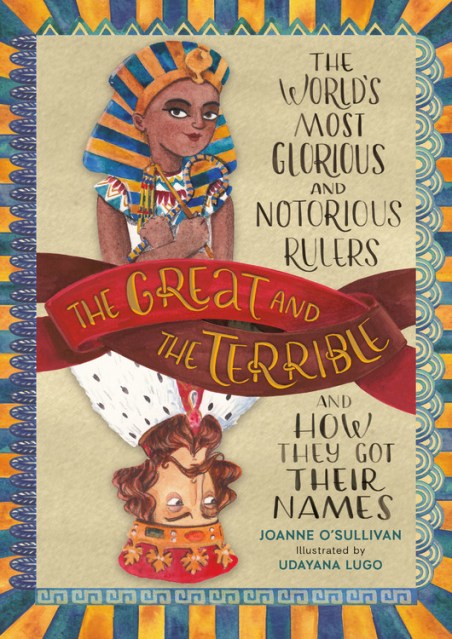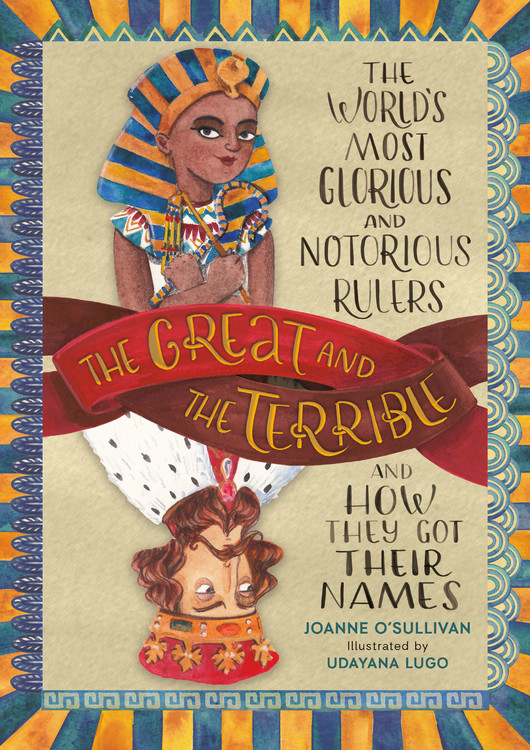Promotion
Use code MOM24 for 20% off site wide + free shipping over $45
The Great and the Terrible
The World's Most Glorious and Notorious Rulers and How They Got Their Names
Contributors
Illustrated by Udayana Lugo
Formats and Prices
Price
$17.99Price
$22.99 CADFormat
Format:
- Hardcover $17.99 $22.99 CAD
- ebook $9.99 $12.99 CAD
This item is a preorder. Your payment method will be charged immediately, and the product is expected to ship on or around September 15, 2020. This date is subject to change due to shipping delays beyond our control.
Also available from:
We’ve heard of Alexander the Great. We’ve heard of Ivan the Terrible. But what was so Great about Alexander? What was so Terrible about Ivan? Spanning centuries of history in a culturally diverse framework-from ancient India to nineteenth-century Hawaii, and with a balanced focus on notorious women rulers as well as male, The Great and the Terrible takes a humorous look at some of the most glorious and notorious figures in history through the lens of the nicknames they’re remembered by.
While some of the characters mentioned here are more prominent in world history (Cyrus the Great introduced the world’s first human rights charter), others are well known only within their own cultures. The Great and the Terrible gives middle-grade readers an opportunity to dip into the breadth of world history, sampling its cultural diversity and its stranger-than-fiction historical exploits, with a mix of the sensational and the serious. It helps to correct the imbalance in many history books that currently only focus on Western Civilization, shining the spotlight on achievements (and foibles) in many different cultures.
Genre:
-
"Broad of scope and chock full of juicy role models and anti-models."Kirkus Reviews
-
"Young people intrigued by the lives of historical figures will devour this."Booklist
-
"This amusing, colorful anthology provides an overview of some of history's most beloved and most notorious rulers.... A strong addition to middle school libraries and nonfiction collections for youth."School Library Journal
- On Sale
- Sep 15, 2020
- Page Count
- 176 pages
- Publisher
- Running Press Kids
- ISBN-13
- 9780762496617
Newsletter Signup
By clicking ‘Sign Up,’ I acknowledge that I have read and agree to Hachette Book Group’s Privacy Policy and Terms of Use







